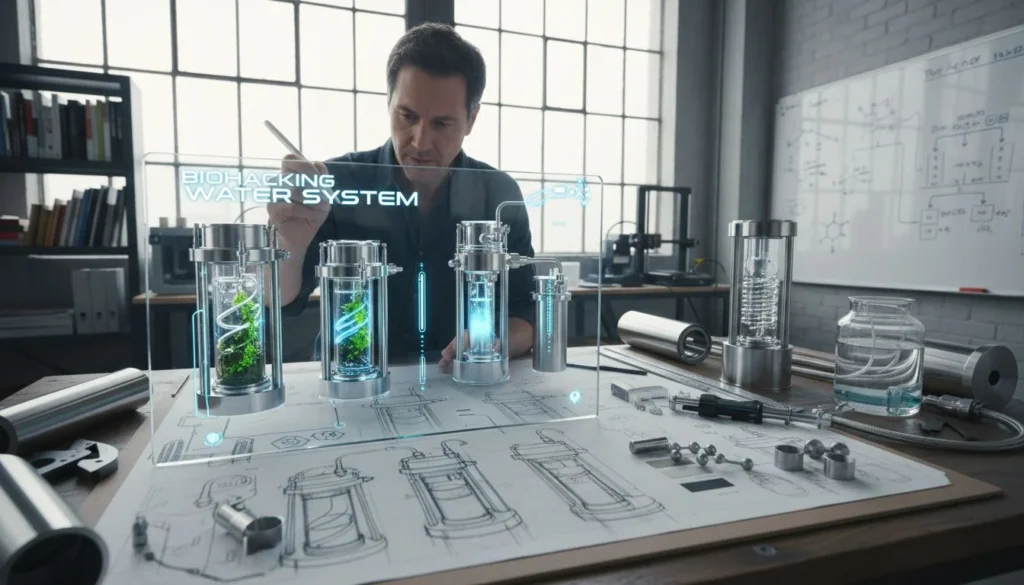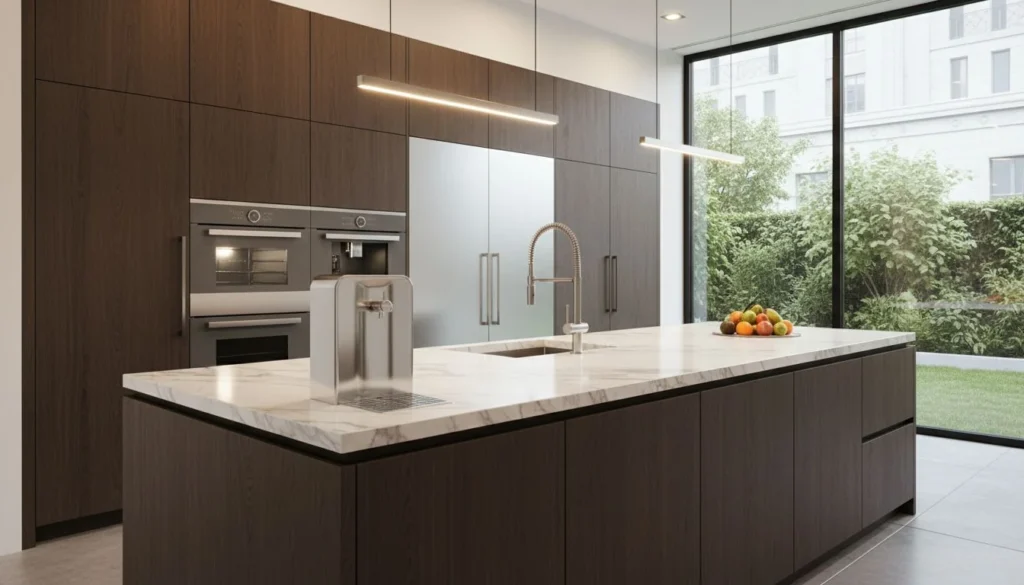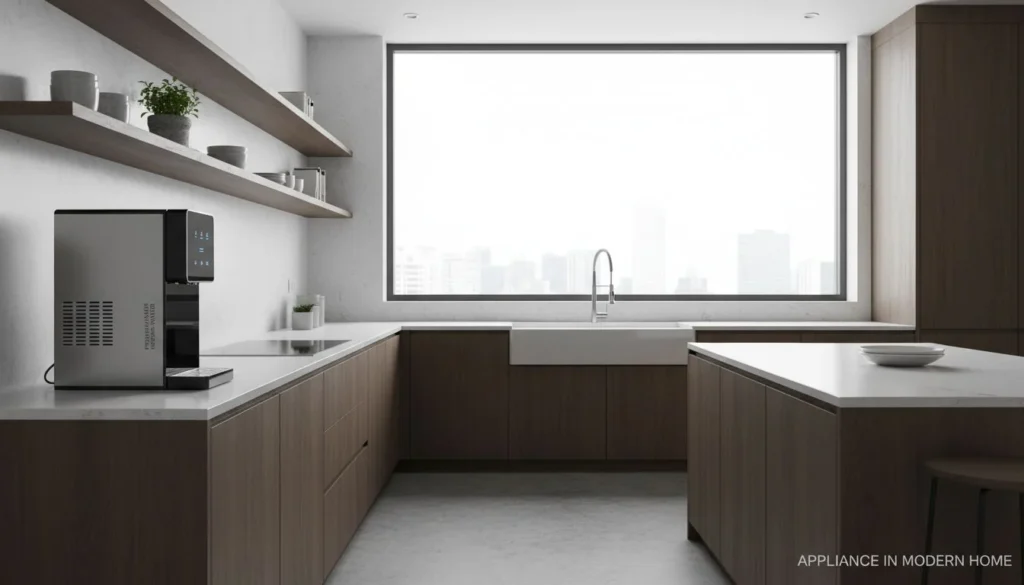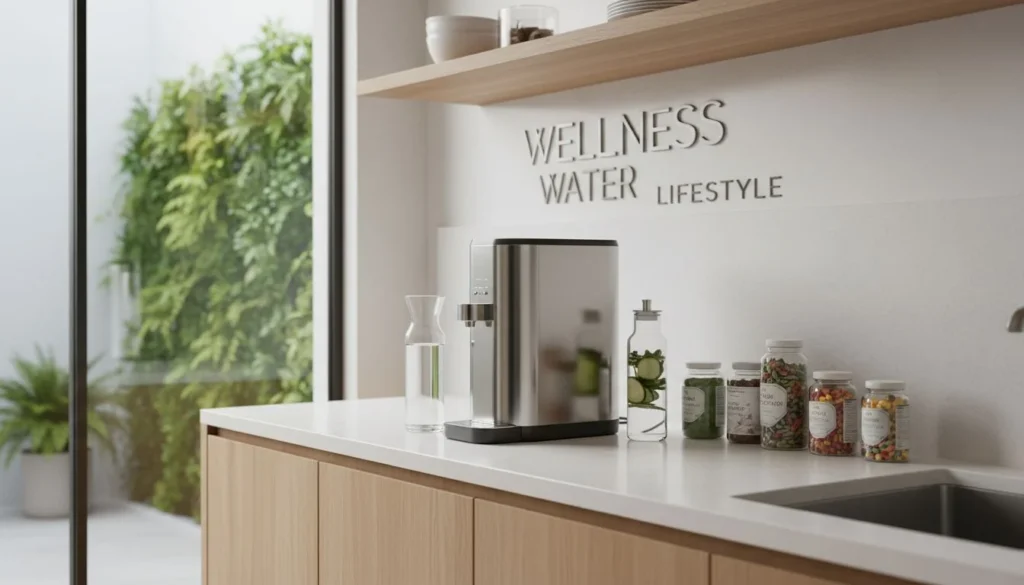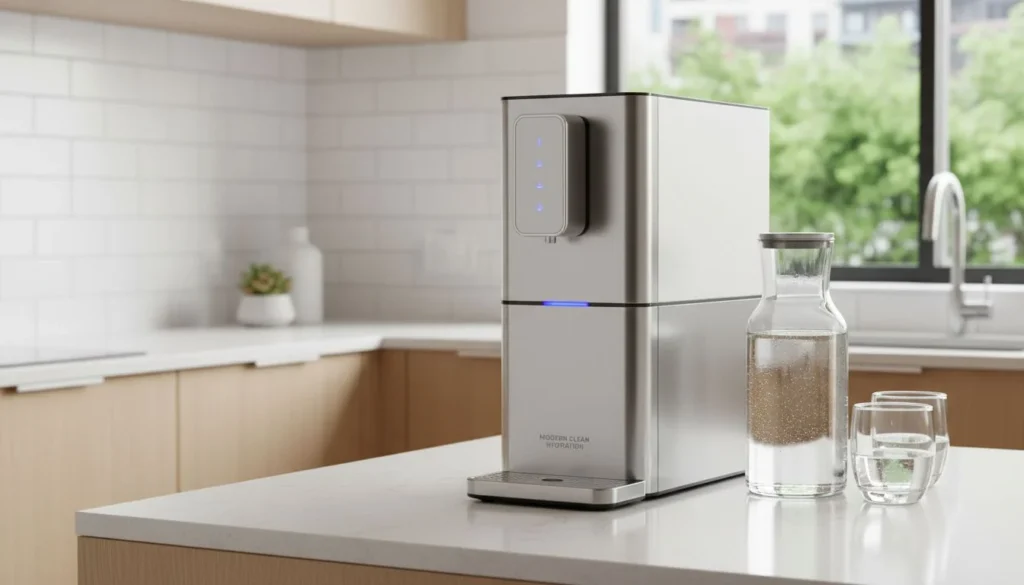
空気清浄機市場を探索することは、多くの可能性を秘めたエキサイティングな冒険に似ている。この旅には多くの可能性が秘められている。
米国で空気清浄機ブランドを立ち上げるには、初年度に1TP4.5万から1TP4.10万を投資する必要がある。この金額には、製品開発と在庫が含まれる。また、マーケティングやB2B営業活動も含まれる。
この数字に最初は戸惑うかもしれない。私がヒソエアを立ち上げたときの感覚を覚えています。これらのコストを理解することは、多くのことを教えてくれます。製品開発にお金をかけることで、空気清浄機の独自性を高めることができます。在庫管理はビジネスを円滑に進めるために役立ちます。マーケティングは、特にAmazonやShopifyのようなサイトでは、あなたの拡声器の役割を果たすので、広告費は非常に重要です。B2Bの販売に目を向ければ、展示会や出張にかかる費用も重要だ。管理すべきことはたくさんある。しかし、綿密な計画と少しの勇気があれば、空気清浄機ブランドを立ち上げることは非常にやりがいのあることだ。
空気清浄機ブランドの立ち上げには、1年目に5万~10万米ドルが必要である。真
コンテキストでは、必要な初期投資としてこの範囲を指定している。
HisoAir は、Decibel Cancellation™ 技術を清浄機に採用しています。真
HisoAirはこの技術を統合し、最適なパフォーマンスを実現します。
製品開発に関わる主なコストとは?
製品を作るとき、お金がどこに消えていくのか自問したことがあるだろうか?
製品開発費には、研究開発、デザイン、プロトタイプ、テスト、製造、マーケティング、納品が含まれる。発売を成功させるには、これらのステップにうまく予算を配分することが重要です。賢明な出費が鍵となる。
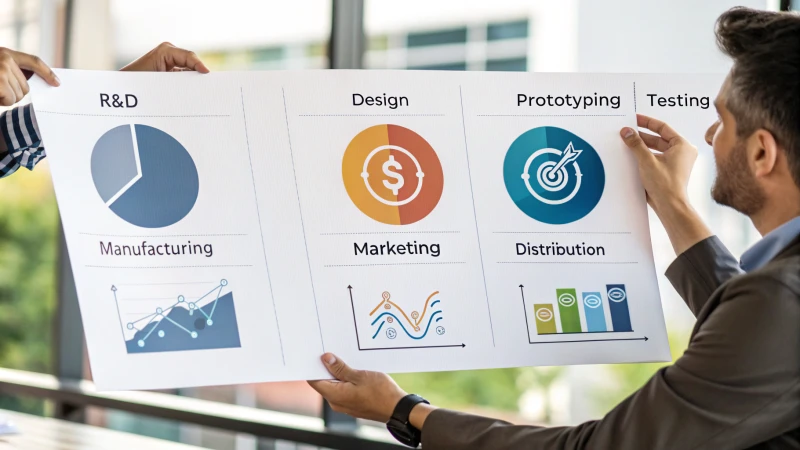
研究開発費
研究開発は私の旅が始まる場所であり、特別な機能で基礎を固める。成功のための計画を描くような感覚だ。市場調査は、私にとって探偵の仕事のようなもので、人々が本当に必要としているものは何か、どうすればユニークなものを提供できるかを探る。フィージビリティ・スタディは、私の夢が現実的であることを確認するチェックの役割を果たした。
| 研究開発活動 | 推定コストの範囲 |
|---|---|
| 市場調査 | $5,000 - $20,000 |
| フィージビリティ・スタディ | $10,000 - $30,000 |
デザインとプロトタイプのコスト
デザイン段階は、アイデアが目に見え、現実になるときだ。この部分はエキサイティングだが、大変だと感じた。採用 プロフェッショナル・デザイン・サービス1 プロトタイピングは、シンプルなアイデアを市場に通用する製品に変えます。プロトタイピングは、デザインに命を吹き込むようなもので、本格的な生産を開始する前に不可欠です。
| デザイン活動 | 推定コストの範囲 |
|---|---|
| 工業デザイン | $5,000 - $25,000 |
| プロトタイピング | $10,000 - $50,000 |
試験および認証費用
テストは、あなたの製品が期待に応えていることを示します。この段階はとても重要で、あなたの創造物に最終試験を与えるようなものです。認定を受けることは、自分の努力が価値あるものであることを証明するバッジを得るような気分になることがある。
| テスト活動 | 推定コストの範囲 |
|---|---|
| 機能テスト | $5,000 - $15,000 |
| 安全認証 | $5,000 - $20,000 |
製造コスト
ものづくりはビジョンを現実に変える。私はここで夢が現実になるのを見た。材料と労働力を賢く扱うことは、コストに大きく影響します。信頼できるパートナーが、タイムラインと予算の成功を左右します。
| 製造活動 | 推定コストの範囲 |
|---|---|
| 工具 | $10,000 - $40,000 |
マーケティングおよび流通コスト
マーケティングは、製品とオーディエンスを結びつける。初めてマーケティング戦略を立てるのは、大々的なお披露目を計画するようなものだ。優れた広告は、成功を極端から極端に変えることができる。
| マーケティング活動 | 推定コストの範囲 |
|---|---|
| デジタル広告 | $2,000 - $10,000 |
このような段階で品質とコストのバランスをとることは、私が尊敬する芸術である。これらの費用を知ることで、私は軌道に乗り、製品発売を成功させる準備ができた。
米国で空気清浄機ブランドを立ち上げるには5万~10万米ドルかかる。真
初期投資には株式購入、製品開発、マーケティングが含まれる。
HisoAir は空気清浄機に Decibel Cancellation™ 技術を採用しています。真
HisoAirは、デシベル・キャンセリング™などの高度な機能を統合し、最適なパフォーマンスを実現します。
棚卸資産と在庫の予算は?
スプレッドシートを見て、どれくらいの在庫が必要かを理解しようとすることがあるだろうか?ビジネス・オーナーは、これがバランスを取る行為であることを知っている。
私は、製品の種類と市場にどれくらいの競合が存在するかに基づいて在庫の予算を計画している。サプライヤーの条件も重要です。販売予測もこのプロセスに役立ちます。通常、全予算のうち25-40%を在庫に回します。これは本当に重要だ。予算に占める割合は大きい。

製品タイプと市場ニーズの理解
空気清浄機のビジネスでは、販売する製品の種類が予算の選択に深く影響することをすぐに学んだ。市場がすでに埋まっているところで、小型の空気清浄機を売り出すことを想像してみてほしい。目立つためには、派手なデザイン以上のものが要求される。ユニークな機能は、製品により多くの予算をかけることを要求する。 開発2.初期在庫の予算は、ブランドを左右する重要なものだった。本当に重要だった。
サプライヤー条件と初期投資
良いサプライヤーを見つけるのは金を見つけるようなものだ。早い段階で、私は良い条件を得ることが必要だと気づいた。最小注文数量(MOQ)は、私が在庫に投資する金額を決定した。例えば、1個$60で500個ということは、輸送費や関税を考慮しても、$30,000を前払いすることになる。大きな金額だ。しかし、このような出費を計画しておくことで、おそらく後々の問題を避けることができる。
販売予測と在庫回転率
販売予測は私の水晶玉のようなものだった。在庫が多すぎたり少なすぎたりするのを防ぐのに役立った。在庫回転率(売上原価÷平均在庫)を計算することで、在庫管理の良し悪しを判断した。
| 在庫回転率 | 解釈 |
|---|---|
| 2以下 | 過剰在庫のリスク |
| 2~4 | 健康的なターンオーバー |
| 上記4 | 不足の可能性 |
この分析によって、私は予算を調整することができた。必要不可欠なものだった。
在庫予算に影響するマーケティング・コスト
マーケティングも重要な役割だった。アマゾンのようなプラットフォームが私のお気に入りで、1クリックあたり$4~$5の広告費がかかった。10%のコンバージョン率で、私はすぐにトラフィックを流し続けるために毎日$100-$200の予算が必要であることに気づきました。このようなマーケティングコストは、直接的に私の 在庫3 より多く売るということは、十分な商品を用意するということだからだ。
在庫の予算を立てるには、単に数字だけでなく、それぞれの部品が私の仕事に与える影響を理解する必要があった。商品の種類からマーケティング計画まで、すべてを考慮することで、無理なく円滑なオペレーションを維持するための資金を確保した。
予算編成におけるテクノロジーの活用
予算管理ソフトを日常に導入したことで、すべてが変わった。これらのツールは、リアルタイムの在庫モニタリングと自動再注文アラートを提供してくれた。このツールのおかげで、私は競争の激しい市場で優位に立つことができました。
戦略とテクノロジーを融合させることで、私はビジネスの旅を通して成長と持続可能性を支える強力な予算計画を策定した。
空気清浄機ブランドの立ち上げには、1年目に$5万~$10万円が必要。真
初期投資には株式購入、製品開発、マーケティングが含まれる。
アマゾン広告のクリック単価は$4-$5、コンバージョン率は10%。真
これはアマゾン広告の平均的なコストとコンバージョン率である。
AmazonとShopifyで販売する場合のマーケティング費用は?
AmazonやShopifyのマーケティング費用の迷路をナビゲートするのは、ジグソーパズルをつなぎ合わせるようなものだ。
アマゾンで販売する場合、次のような資金を準備する必要がある。 PPC 広告のクリック単価は$4-5程度です。Shopifyはソーシャルメディア広告と SEO その代わり両プラットフォームとも、慎重に予算を組む必要がある。これは成功を収めるために極めて重要である。予算は不可欠です。
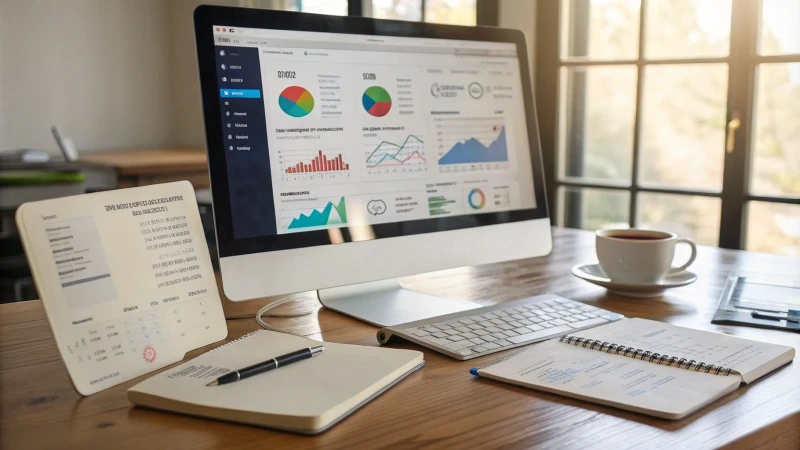
アマゾンの広告費を探る
アマゾンでの販売は、新しい世界をもたらした。 PPC (ペイ・パー・クリック)広告。各クリックには$4-5程度のコストがかかり、売れる確率は10%しかないため、広告費だけで毎日$100-200が必要だと気づいた。その他、アマゾンの紹介料やフルフィルメント・バイ・アマゾン(全銀協手数料は商品のカテゴリーやサイズによって異なる。私はすべての手数料を慎重に計算した。すべての手数料が重要だった。
Shopifyのマーケティング・アプローチ
Shopifyに乗り換えたことで、新しいチャンスを発見したような気分でした。このプラットフォームはマーケティング戦略を自由にすることができる。私は ソーシャルメディア広告4インスタグラムとフェイスブックを使って訪問者を呼び込む。この方法は、$2000前後のキャンペーンを開始することで、より個人的で、コスト的にもそれほど怖くはないと感じました。検索エンジン最適化 (SEO)はナチュラルリーチにとって非常に重要だった。Amazonと違い、Shopifyは出品手数料が無料だが、テーマやアプリ、クレジットカードの手数料はかさむ。
マーケティング費用の比較:AmazonとShopifyの比較
| 経費の種類 | アマゾン | ショップファイ |
|---|---|---|
| 広告 | PPC ($4-5/クリック) | ソーシャルメディア SEO (様々な) |
| プラットフォーム料金 | 紹介 全銀協 料金 | 購読料および取引手数料 |
| 追加費用 | 掲載料 | アプリ&テーマ |
これらの違いを理解することで、私は賢く予算を配分し、自分の考えに基づいて適切なプラットフォームを選ぶことができた。 営業目標5.両プラットフォームを使うのがベストな選択かもしれない。
Eコマース成功のための戦略的予算編成
最高のリターンを得るために、私は両方のプラットフォームでマーケティング費用をうまく計画することを学んだ。私はいつも、コンバージョン率や広告費用対効果などを分析していた。ROAS).様々な広告タイプを試し、結果に基づいて予算を調整することで、より良い成功につながった。からのアドバイス 電子商取引の専門家6 は、私の戦略を改善し、この競争の激しい市場で継続的に成長するための洞察を得るのに役立ちました。プラットフォームの変化を知ることで、私のマーケティング戦術を効果的かつ最新のものに保つことができました。
空気清浄機ブランドの立ち上げには、1年目に$5万~$10万円が必要。真
初期投資には在庫、製品開発、マーケティング費用が含まれるからだ。
アマゾン広告のクリック単価は$4-$5、コンバージョン率は10%。真
アマゾンの平均クリック単価は$4-$5で、コンバージョン率は10%である。
トレードショーはB2Bセールスにとって賢い投資か?
多忙な展示会は、B2B販売計画にとって高いコストに見合うものだろうかと自問自答することはないだろうか。
そう、見本市への参加はB2B営業にとって非常に良い投資なのだ。これらのイベントは、新しい顧客を見つける大きなチャンスを提供してくれる。また、あなたのブランドを多くの人に知ってもらうのにも役立ちます。同業者とのネットワーキングもここで行われる。コストと、そのイベントがあなたの戦略にどれだけ合っているかをチェックすることが重要です。

コストと利益の評価
展示会に行くことを考え始めたとき、その費用の高さに驚いた。ブース代や旅費などの経費は大きく、$50,000以上かかった。圧倒される感じだった。しかし、 可能性7 新たなリードによる投資収益率(ROI)は、良いリターンをもたらすかもしれない。突然、すべてがクリアになったように思えた。
ネットワーキングの機会
トレードショーは、企業にとって巨大なパーティーのようなものだ。私は初めての展示会で緊張と興奮の両方を感じた。同業者との出会いは、単に顧客を見つけるためだけでなく、将来のプロジェクトやパートナーシップにつながる人脈を築くためでもあった。プロフェッショナルなネットワークを広げる価値は非常に大きかった。
| メリット | 詳細 |
|---|---|
| リード・ジェネレーション | 多くの潜在顧客へのアクセス |
| ブランドの認知度 | 製品やサービスを紹介する機会 |
| 市場調査 | 業界動向と競合他社に関する洞察 |
戦略的考察
どの展示会も同じではありません。私の目標に合ったものを選ぶことが重要であることがわかりました。私は、自分の理想とするオーディエンスが集まるイベントをターゲットにしています。この戦略によって結果が大きく変わります。 右8 フィットしている。
テクノロジーの活用
デジタルツールを加えることで、私のすべてが変わりました。バーチャルブースやライブストリーミングトークなどの要素を取り入れることで、以前よりも多くの人にリーチすることができ、直接会場にいなかった人にも効果的にイベントを届けることができました。
見本市を考えているB2B企業にとって、綿密なプランニングは非常に重要だろう。考えられるメリットとコストを比較し、新しいアイデアを試し、リアルとデジタルの両方のスペースを利用することで、イベントの効果を高めることができる。私の経験では、スマートなプランがあれば、トレードショーは単にお金を使うだけでなく、将来の成長への投資となる。
米国で空気清浄機ブランドを立ち上げるには、$5万~$10万かかる。真
その背景には、ブランド立ち上げのための投資額の目安がある。
アマゾン広告のクリック単価は$4~5で、コンバージョン率は10%。真
この文脈は、アマゾン広告の平均コストとコンバージョン率を示している。
結論
米国で空気清浄機ブランドを立ち上げるには、初年度の製品開発、在庫、マーケティング努力に1TP4.5万から1TP4.10万を投資する必要がある。
-
プロフェッショナルなデザインサービスが、どのように製品の魅力と機能性を高めるかをご覧ください。 ↩
-
ユニークな製品機能への投資が競争力を高め、予算配分を正当化する方法を探る。 ↩
-
効果的なマーケティング戦略によって在庫レベルを最適化し、販売実績を向上させる方法をご覧ください。 ↩
-
ソーシャルメディア広告を利用してShopifyストアにトラフィックを誘導する効果的な戦略を探る。 ↩
-
マーケティング活動をオーディエンスのニーズに合わせるために重要な、ターゲット市場を特定する方法を学びます。 ↩
-
コンサルティングの専門家がどのようにeコマース戦略を強化し、ROIを向上させるかをご理解ください。 ↩
-
このリンクをクリックすると、見本市がB2B営業に不可欠なリードジェネレーションをいかに大幅に高めることができるかについての洞察が得られる。 ↩
-
このリンクでは、ビジネス目標に沿った見本市を選び、投資を最適化するためのガイダンスを提供します。 ↩


